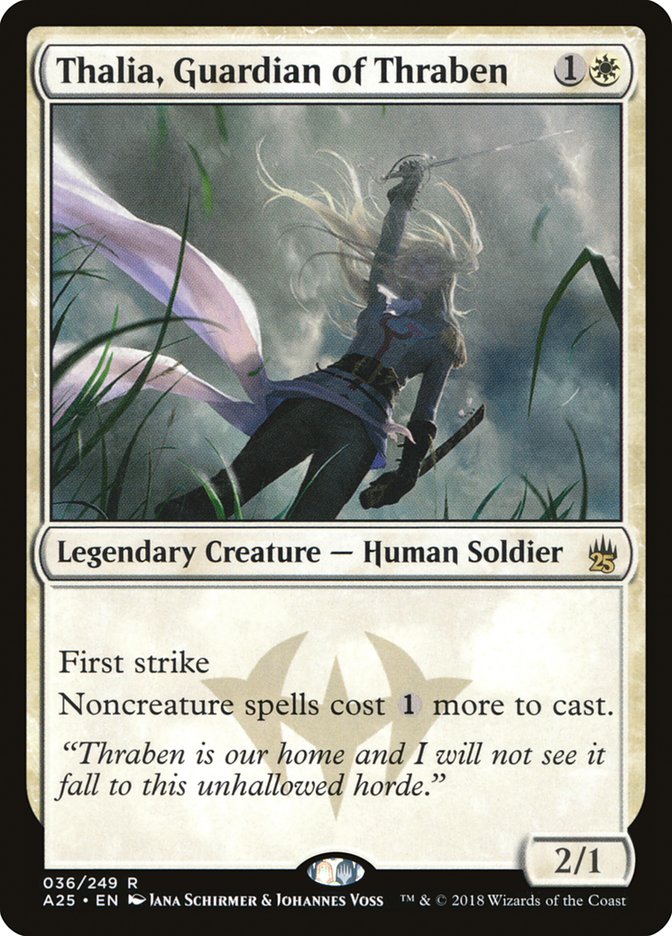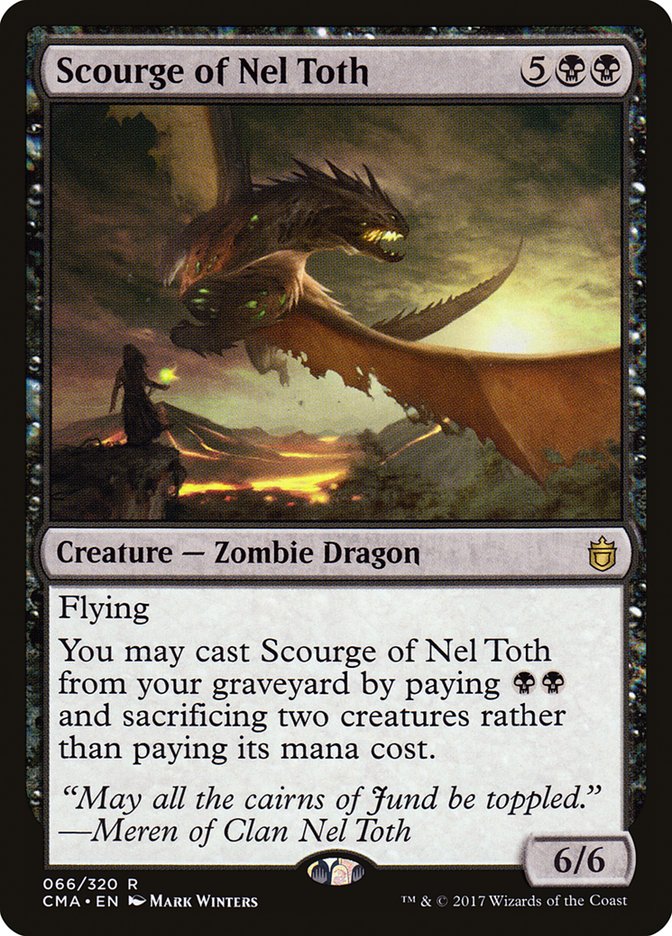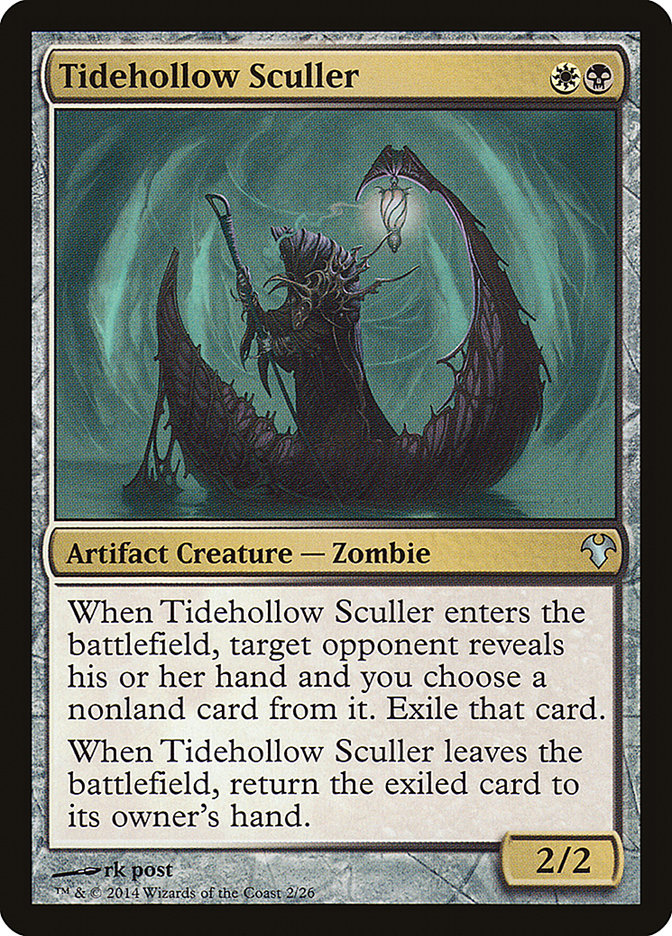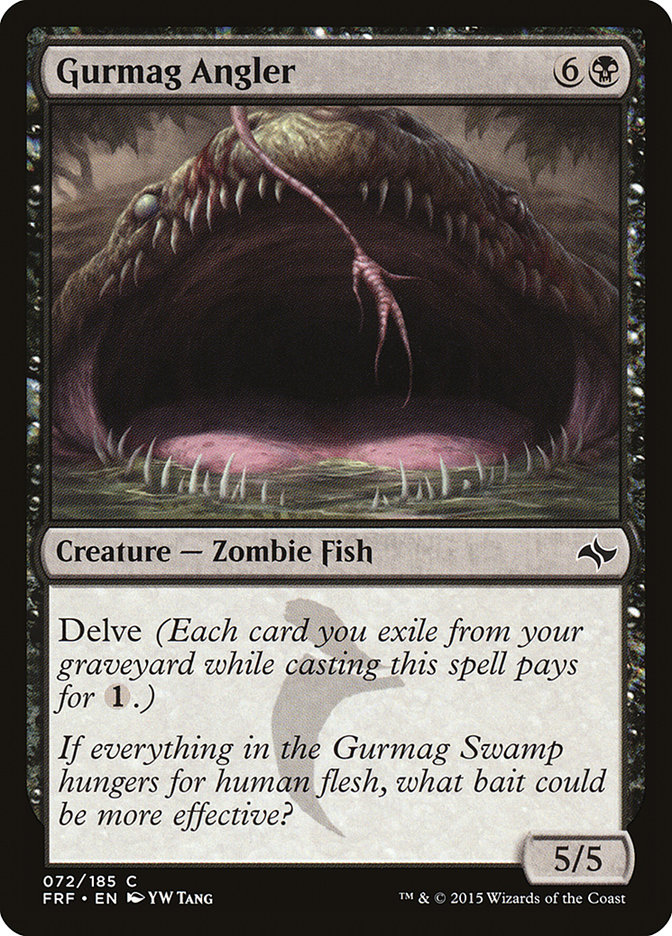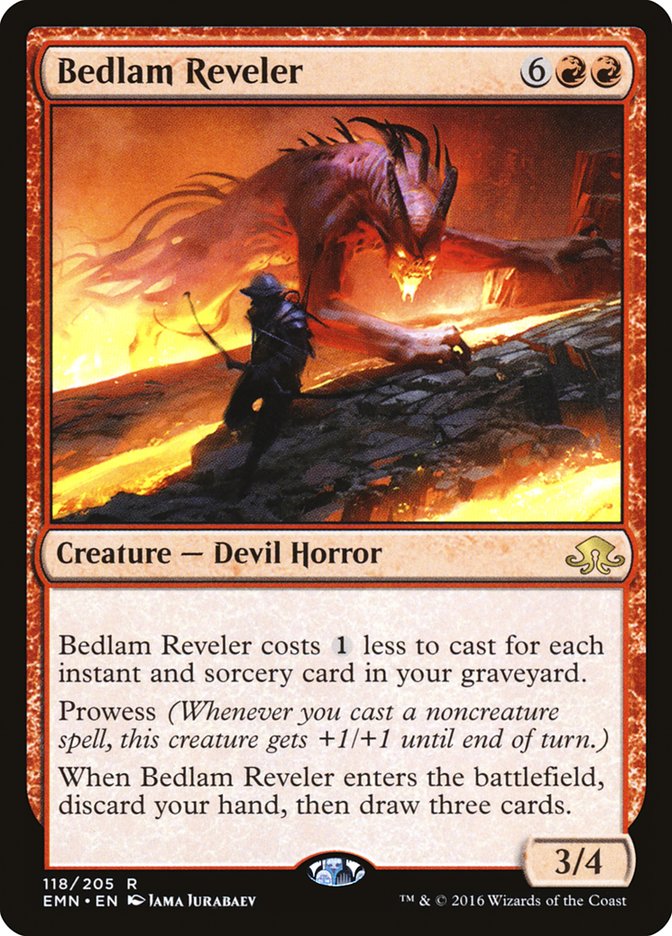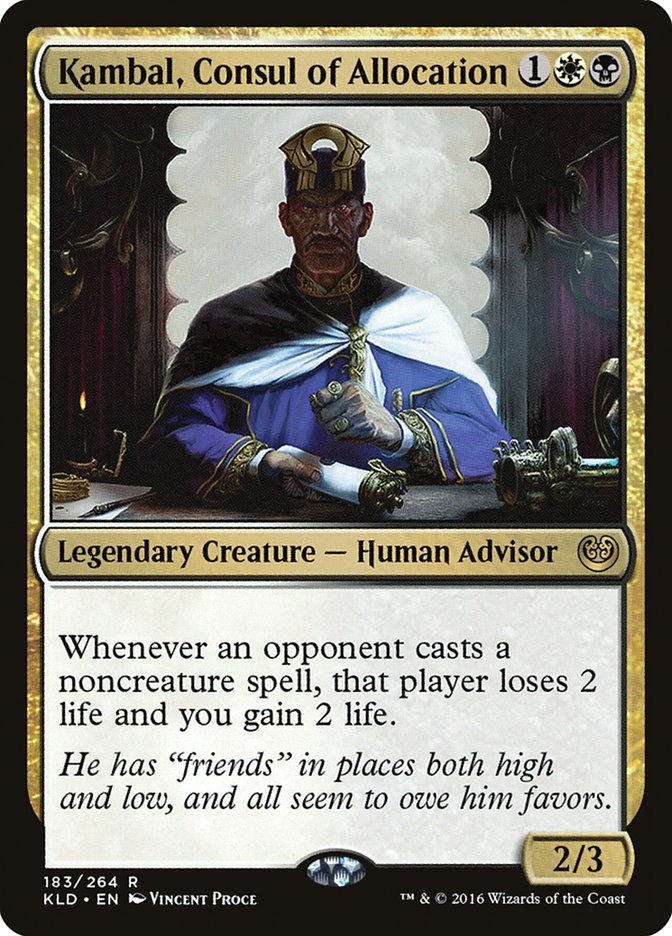Deathrite Shaman had become
the
defining card in Legacy. Its banning will change the Legacy metagame more
than banning any other card would have, including Brainstorm. This is the
perfect test of what happens when you ban a “pillar of the format.”
Personally, I think it feels like a breath of fresh air. Legacy is an
entirely new format, and it will take months to unpack all the ripples this
has. I’d be skeptical of anyone who tells you they know the biggest winners
and biggest losers as a result of this ban outside of the decks that
actually played Deathrite Shaman.
On level zero, it’s now easier/safer to use your own graveyard, attack the
opponent’s mana, and to attack with one power creatures. Immediate winners
include Tarmogoyf, Nimble Mongoose, Dredge, Reanimator, Life from the Loam,
Punishing Fire, Lingering Souls, Wasteland, Thalia, Guardian of Thraben,
Leonin Arbiter, Rishadan Port, and Goblin Lackey. However, the real winners
are probably the decks that were worst against the decks Deathrite Shaman
propped up, not the cards that were worst against the card Deathrite
Shaman; and the real losers other than the decks that were directly
affected are the decks that are worst against the decks that become the
best decks.
So on the surface, this change appears great for Lands; Deathrite Shaman
fights against graveyards and mana denial, both of which counter Lands’
strategy, but Lands had tools to fight Deathrite Shaman and Deathrite
Shaman decks. Deathrite Shaman makes people play fair decks, and Lands
would prefer to play against fair decks. If Deathrite Shaman’s ban makes
people play Storm more because there are fewer copies of Leovold, Emissary
of Trest or whatever else about Deathrite Shaman decks may have been good
about Storm, then things look worse for Lands. Obviously Storm loses
Gitaxian Probe, which is a great card for them, but I’m not sure that
that’s more significant than just how the metagame ends up looking.
Of course, the other side is that Death and Taxes looks like a pretty clear
winner, since it’s now easier to use Thalia, Guardian of Thraben and
Wasteland to stop your opponent from casting spells, and it’s harder to
cast Kolaghan’s Command; if Death and Taxes keeps Storm out of Legacy,
that’s good for Lands unless it opens the door for a different unfair
strategy.
Aside from the Brainstorm decks with Deathrite Shaman, Elves was another
big loser, as Deathrite Shaman had become a core piece of their strategy.
Elves also happens to be one of Death and Taxes worst matchups, so this
seems like a pretty clear big win for Death and Taxes. This is basically
all good news for Death and Taxes unless it’s such clear good news for them
that cards like Sulfur Elemental, Dread of Night, and Massacre become
widely played in anticipation of a surge of Death and Taxes; it may look
like a fair deck that should be hard to hate out, but there are a handful
of cards that are pretty solid hard counters to that deck, so it can kind
of become a victim of its own success.
Goblins has been so far outside of the Legacy metagame for so long that I
don’t even really know how to evaluate it, but Deathrite Shaman was
certainly responsible for that since it blocks Goblin Lackey and offers
resistance to Wasteland and Rishadan Port. As to whether that means it’s
good now, I really don’t know, but I kinda like its chances.
All of this is just background noise for me though. What I really want to
know is how good Faithless Looting, Cabal Therapy, and Lingering Souls are
now that I don’t have to worry about Deathrite Shaman. It’s been years
since I’ve been to work on this deck, and there are a lot of new options to
consider.
Creatures (19)
Lands (20)
Spells (21)
- 3 Goblin Bombardment
- 4 Cabal Therapy
- 4 Thoughtseize
- 2 Burning Inquiry
- 4 Faithless Looting
- 4 Lingering Souls
Sideboard

This deck has actually gotten some really exciting new tools since my
top 8 finish with it at GP Atlanta in 2012
. Stitcher’s Supplier and Scourge of Nel Toth are independently exciting
cards for the deck that happen to play perfectly together. Both cards offer
the deck different great ways to block, something it had been sorely
missing, especially against green decks with creatures like Tarmogoyf and
Nimble Mongoose that Goblin Bombardment can’t really answer.
Scourge of Nel Toth is really incredible. It costs almost nothing and gives
you a completely different angle of attack that’s really hard to deal with
in a way that fundamentally changes what this deck is about. With these
additional Zombies, Gravecrawler is considerably more reliable.
One problem with Scourge of Nel Toth is that it’s unplayable from your
hand; you have to get it into your graveyard. Faithless Looting is plan A,
but this deck is already very good when it draws Faithless Looting, and the
idea is that Stitcher’s Supplier will sometimes give you a Scourge of Nel
Toth for free, and when it doesn’t, it will often hit either Faithless
Looting, or, if you’re really desperate, a Cabal Therapy that you can use
on yourself. I’ve added two Burning Inquiries to help with this issue, but
honestly, adding blue for Careful Study might be better. It’s also possible
that you’re just supposed to plan to cast Thoughtseize or Cabal Therapy on
yourself some portion of the time and play Blood Artist of something in
that slot. Collective Brutality could also work.
Tidehollow Sculler was actually pretty good in this deck, but I’m not that
worried about losing it since I’ve moved it to the sideboard, but I am a
little worried about losing Blood Artist, just because it usually took a
turn off your clock.
Gurmag Angler is another consideration as a 1-2 of, since you’re filling
your graveyard pretty quickly and not all of the cards matter, but I
decided that Scourge of Nel Toth was just a better big creature. Still,
since they require very different resources, it’s possible that a mix is a
better way to go.
Really, I think of this deck as existing in the same space as Hollow One
and Mardu Pyromancer, which could potentially both be ported to Legacy as
other Cabal Therapy decks, and the question is just which creature shell is
the best support for the combination of Faithless Looting, Cabal Therapy,
and Lingering Souls.
Creatures (8)
Lands (17)
Spells (35)

Can you just add Cabal Therapy to a Modern deck and call it a Legacy Deck?
Honestly, it wouldn’t surprise me if the answer is yes. It’s a really good
card. Obviously there are a few other changes, but that’s the big one.
I’ve long thought the need to play Brainstorm in Legacy is way overstated.
Specifically, that Faithless Looting is approximately as strong as long is
your deck is built to use the graveyard well, and Bedlam Reveler kind of
trumps Brainstorm/Delver decks’ fair game. They need to be able to Force of
Will it, but Force of Will is horrendous against Cabal Therapy.
I think the problem this deck has had is that you can’t afford to play
enough removal to always have an answer to Deathrite Shaman, and Deathrite
Shaman is so good against you; however, when you don’t have to worry about
that, this seems like it should be fantastic against any kind of Delver
deck.
I’ve generally found spot discard like Thoughtseize and Cabal Therapy to be
a pretty effective way to fight combo decks like Sneak and Show that need
to build a specific hand to win, but less effective against Storm, which
can rebuild fairly easily, but I’m really excited about Kambal as a
sideboard card there. The discard can reliably slow them down, and I think
it’s very hard for them to beat discard backed by Kambal. If you expect
Storm to be popular, I’d probably play more of those.
Another option that’s more similar to the Zombie build is to build more of
a token strategy rather than to focus on recurring Gravecrawler, which
makes the deck a little less vulnerable to graveyard hate:
Creatures (15)
Lands (18)
Spells (27)

Basically as advertised. Instead of spending mana on returning
Gravecrawler, the spells are a little more expensive and they make multiple
creatures. Those creatures get sacrificed to Goblin Bombardment and Scourge
of Nel Toth and trigger Blood Artist. Squee offers a mana sink like
Gravecrawler, except it’s much slower, but also doesn’t care about
graveyard hate and offers a blocker.
This build is much weaker against cards like Daze and Wasteland because you
can’t open with a threat and start clocking your opponent. Just casting
Gravecrawler on turn one and attacking can actually matter against the
resource denial decks in Legacy, and this deck can just get shut out by
Wastelands backed by Daze or Thalia, Guardian of Thraben. With Deathrite
Shaman gone, people will attack your mana more, and we’ll start to remember
that two is actually a lot of mana in Legacy, which is why I’m more drawn
to the Zombie approach.
I really don’t know how good these decks are, but they look legitimate to
me, and I’m extremely excited to get to play this kind of deck again. I
thought that the format had just moved past them, but now I really feel
like there’s a lot to explore.
When you ban a card like Deathrite Shaman, as others have put it, you’re
really unbanning countless cards that suddenly become competitive. Once the
format settles down, maybe only a few of the things people try will really
seem playable, but for now the floodgates are down and Legacy is a whole
new format. The team Pro Tour got a lot more exciting.
And a lot harder to prepare for.



